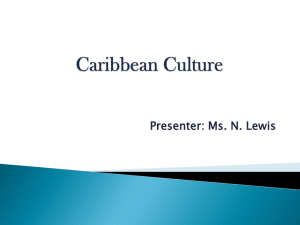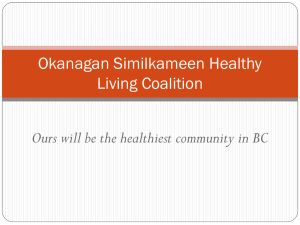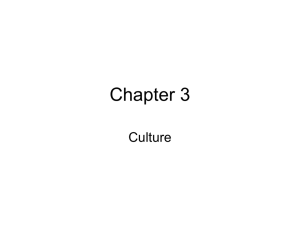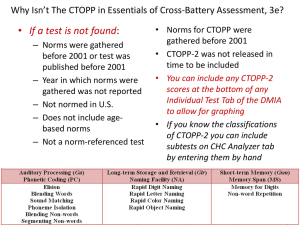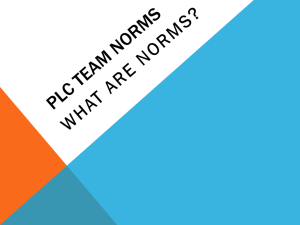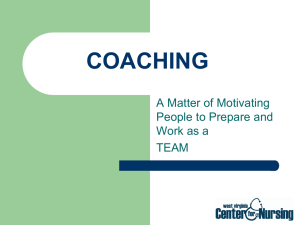Structure
advertisement
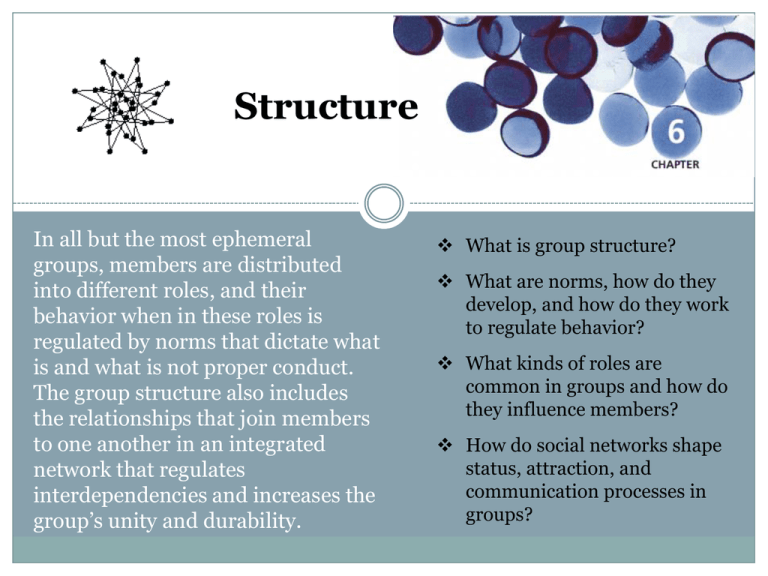
Structure In all but the most ephemeral groups, members are distributed into different roles, and their behavior when in these roles is regulated by norms that dictate what is and what is not proper conduct. The group structure also includes the relationships that join members to one another in an integrated network that regulates interdependencies and increases the group’s unity and durability. What is group structure? What are norms, how do they develop, and how do they work to regulate behavior? What kinds of roles are common in groups and how do they influence members? How do social networks shape status, attraction, and communication processes in groups? Norms Roles The Nature Of Social Norms The Nature of Social Roles Social Network Analysis The Importance of Norms Role Theories Network Dynamics Group Socialization Application: SYMLOG Role Stress Relations The nature of social norms Norms are consensual and often implicit standards that describe what behaviors should and should not be performed in a given context. ■ Norms are group standards. Provide direction and motivation Organize social interactions Make others’ responses predictable Folkways are ubiquitous social standards Mores are more strictly enforced moral rules The nature of social norms Development of Norms Sherif's (1936) autokinetic effect studies Participants just judged the distance a dot of light moved in a darkened room Autokinetic Effect It moved about 3.5 inches But, unbeknown to the participants, a stationary dot of light will seem to move What if people make their judgments with others, and state estimates aloud? Looks like 1 inch I’d say 2 inches 7.5 inches Initially, they differ; but over trials, they converge The creation of a norm Average distance estimates Person A Convergence Person B Person C Alone Group Session 1 Group Session 2 Group Session 3 When Sherif put in a confederate in some groups who made exaggerated distance judgments others (B, C) conformed Average distance estimates Confederate Person B Person C New Member,Alone Person D Group Session 1 Group Session 2 Group Session 3 Even when the confederate was replaced, the norm remained Person B New member Average distance estimates Person C Person D Group Session 4 Group Session 1 Group Session 2 Group Session 3 The exaggerated norm lasted for many “generations” of replacements Average distance estimates Group Judgment 33 44 5 6 Generations 7 8 9 The Importance of Norms Internalization of norms • Individuals experience discomfort when the realize they are acting contrary to a norm— especially, an injunctive one. (Milgram’s norm-violation demonstration). Health and normative influence Pluralistic ignorance • Norms support positive, health promoting actions, but also negative ones, including eating disorders and excessive alcohol consumption. • Members may privately disagree with the norm, but they assume they are the only ones who do, and so the norm remains in place. The Importance of Norms Examples • Laptops in classrooms • Alcohol use on campuses • Recycling and waste • Thin-body norms • Pop music • Common courtesy • Online “behavior” Facebook Norms • I should not say anything disrespectful about this person on Facebook. • I should consider how a post might negatively impact this person’s relationships. • If I post something that this person deletes, I should not repost it. • I should NOT post information on Facebook that this person could later use against me. Norms Roles Relations The nature of social roles Roles: The types of behaviors expected of individuals who Role theories occupy particular positions within the group (e.g., roles in a play) Group socialization Independent of individuals Flexible, to an extent Role stress Structure interaction, create patterns of action, define responsibilities The Nature of Social Roles Role differentiation: An increase in the number of roles in a group, accompanied by a decrease in the scope of those roles as each one becomes more narrowly defined and specialized Relationship Role Task Role Two types of roles emerge with great regularity in groups: Task roles (performance and initiating structure and Relationship roles (strength of bonds among members). Role Theories Benne and Sheats (1948) developed their well-known functional theory of roles by observing the interactions of groups at the National Training Laboratories (NTL), an They identified organization devoted to the three types of improvement of groups. roles: task, relational, and individualistic Functional Role Theory Functional Role Theory Functional Role Theory Interactionist Role Theory Group members share a basic sense of the requirements of the roles that are common in most group settings, • Role sending but they work out the details of • Role taking their roles and their demands as • Role they interact with one another enactment Example: Bechky’s analysis of production teams Rooted in a selfpresentational perspective Example: Bechky’s analysis of production teams Deep Role Theory A Psychodynamic Perspective on Roles Example: Moxnes “Deep Roles” Theory Group Socialization Group Socialization Over time members transition from new member to full member Resocialization As newcomers learn their roles they become more committed to the group Role transitions Role socialization Moreland and Levine's group socialization theory The process is mutual: members and the group adapt to each other (assimilation/ accomodation) Stages Transitions Types Processes Group Socialization: Moreland & Levine Different individuals take different paths through this process: Three examples are shown Member B Member A Member C Role Stress Roles create stable group relations, but they can also be the source of group conflict and personal stress Roles stress may vary from one country and culture to another Norms Roles The Nature Of Social Norms The Nature of Social Roles Social Network Analysis The Importance of Norms Role Theories Network Dynamics Group Socialization Application: SYMLOG Role Stress Relations Social Network Analysis Creating spatial maps of groups based on structure Who is connected to whom? A relatively “flat” group What if these ties are removed? Social Network Analysis Clique 2 Clique 1 A group with 2 subgroups Centralized and decentralized subgroups Social Network Analysis 4 Subgroup A 5 8 6 9 3 7 Subgroup B 10 2 11 1 Key Terms N = 13, possible ties = n(n-1) = 156 Nodes Ties (directed) Density Fernandez (29/156) = .19 Degree centrality • Outdegree • Indegree Betweenness Zerbino Closeness Holes E. Strauch F. Strauch Turcatti Vizintin Algorta Paez Canessa Methol Delgado Mangino Parrado http://content.nejm.org/content/vol357/issue4/images/data/370/DC2/NEJM_Christakis_370v1.swf Network Dynamics Status networks: Stable pattern of variations in authority and power The Strauchs & Fernandez Zerbino, Paez, Algorta Expeditionaries Disabled and injured Parrado Younger Members Vizintin Francois Methol Harley Canessa Jabella Inciarte Delgado Turcatti Mangino Nogueira Echauarren Malingerers The informal (actual) status structure does not always match the group’s mandated (formal) structure Attraction network (sociometric structure): Stable patterns of liking-disliking 1 7 1 7 3 3 2 6 5 4 4 6 5 2 Status Attraction Heider's balance theory: likes and dislikes are balanced A A + B - + + C B A + + + C B - C Communication network: formal and informal paths that define who speaks to whom most frequently 1 7 1 7 3 2 3 2 4 6 5 Attraction 4 6 5 Communication Communication networks differ in degree of centralization 1 7 7 3 1 2 3 2 4 6 5 Centralized 4 6 5 De-centralized Communication networks differ in degree of centralization Network Structure and Performance Different types of network structures are more effective than others, depending on the type of task being attempted • Information saturation: centralized networks are most efficient unless information overload • Influence and satisfaction: members who occupy more central positions are more influential and satisfied • Hierarchical networks and information flow: More information flows downward and unrealistically positive information flows upward Application: SYMLOG Observation and coding system developed by Robert Freed Bales Trait (Direction) Sociable (UP) General Behaviors Individual and Organizational Values Outgoing, sociable, Popularity and social success, extroverted being liked and admired Persuasive (UPF) Persuasive, convincing, Active teamwork toward shows task leadership common goals, organizational unity Warm (UPB) Protects others, sympathetic, Protecting less able members, nurturant providing help when needed Equalitarian (P) Friendly, democratic, group- Equality, democratic oriented participation in decision making Cooperative (PF) Cooperative, reasonable, Responsible idealism, constructive collaborative work Task-oriented(F) Serious, logical, objective Conservative, established, “correct” ways of doing things Responsible (DPF) Modest, respectful, Dedication, faithfulness, loyalty dedicated to the organization Contented (DPB) Quietly contented, satisfied, Quiet contentment, taking it unconcerned easy Silent (D) Silent, passive, uninvolved Giving up personal needs and desires, passivity Example Items from SYMLOG Used with Permission. Copyright © 1983, 1985, 1998 SYMLOG Consulting Group. Application: SYMLOG Example SYMLOG Norms Roles The Nature Of Social Norms The Nature of Social Roles Social Network Analysis The Importance of Norms Role Theories Network Dynamics Group Socialization Application: SYMLOG Role Stress Relations



